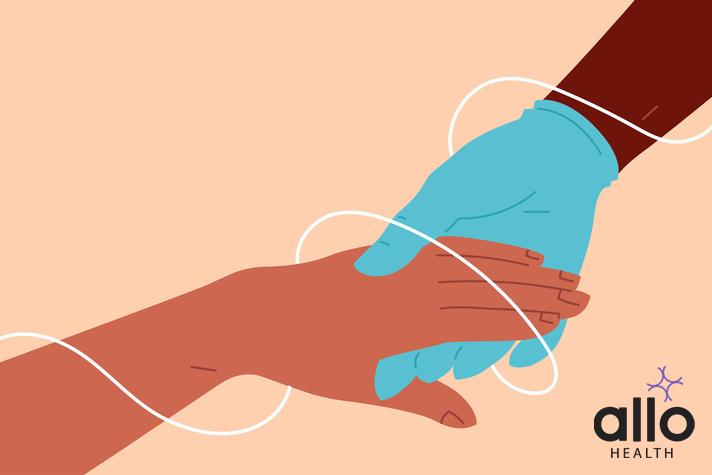Preventive Measures For Sexual Trauma and Disorders

Allo Health is dedicated to personalized well-being, offering support and trusted information tailored to individual health goals. The platform emphasizes human-generated content, led by a distinguished medical team of experts, including physicians and sexual health specialists. Their commitment to credibility involves rigorous fact-checking, authoritative research, and continuous updates to ensure accurate, up-to-date information. Allo Health's unique approach goes beyond conventional platforms, providing expert-led insights and a continuous commitment to excellence, with user feedback playing a crucial role in shaping the platform's authoritative voice.

Dr Sanina Mansoor holds MBBS degree from Yenepoya university,Mangalore.She has 8 years of experience working as a medical officer at various health centres and medical colleges.
Why This Was Upated?
Our experts continually monitor the health and wellness space, and we update our articles when new information became available.
Updated on 10 February, 2025
- Article was updated as part of our commitment to diversity, equity, and inclusion.
"The following blog article provides general information and insights on various topics. However, it is important to note that the information presented is not intended as professional advice in any specific field or area. The content of this blog is for general educational and informational purposes only.
Book consultation
The content should not be interpreted as endorsement, recommendation, or guarantee of any product, service, or information mentioned. Readers are solely responsible for the decisions and actions they take based on the information provided in this blog. It is essential to exercise individual judgment, critical thinking, and personal responsibility when applying or implementing any information or suggestions discussed in the blog."
Trigger Warning: This post discusses sexual trauma and violence.
While the healing process for those affected by sexual trauma and disorders is of utmost importance, it’s equally crucial to focus on preventive measures that can help reduce the prevalence of these devastating experiences. By addressing the root causes and fostering a culture of consent, respect, and education, we can work towards creating a safer and more inclusive society for all.
In this blog post, we’ll explore various preventive measures that can be implemented at individual, community, and societal levels to combat sexual trauma and disorders.
Individual-Level Prevention
Personal empowerment and self-awareness play a vital role in preventing sexual trauma and promoting healthy sexual attitudes and behaviors.
- Comprehensive Sexual Education: Providing comprehensive, age-appropriate, and inclusive sexual education can equip individuals with the knowledge and skills necessary to navigate sexuality, consent, and healthy relationships. This education should cover topics such as anatomy, reproductive health, contraception, and importantly, recognizing and preventing sexual violence.
- Building Healthy Relationships and Communication Skills: Fostering open and honest communication, setting boundaries, and practicing active listening are essential skills for building healthy, respectful relationships. Programs that teach these skills from an early age can help prevent unhealthy dynamics and potential abuse.
- Self-Defense and Personal Safety: While self-defense should never be viewed as a solution to sexual violence, learning basic self-defense techniques and personal safety strategies can provide individuals with tools to protect themselves and increase their sense of empowerment and confidence.
- Substance Abuse Prevention: Addressing substance abuse, particularly in youth and young adults, is crucial as it can increase vulnerability to sexual trauma and impair decision-making abilities. Comprehensive substance abuse prevention programs and resources can help mitigate these risks.

Community-Level Prevention
Creating a supportive and proactive community environment is key to preventing sexual trauma and disorders.
- Bystander Intervention Programs: Bystander intervention programs teach individuals how to recognize potentially harmful situations and safely intervene to prevent or diffuse them. These programs can be implemented in schools, workplaces, and community organizations, fostering a culture of accountability and activism.
- Community Outreach and Awareness Campaigns: Raising awareness through community outreach campaigns can help destigmatize discussions around sexual trauma and disorders, promote healthy norms and attitudes, and provide resources for support and reporting.
- Partnerships with Law Enforcement and Judicial Systems: Collaborating with law enforcement agencies and the judicial system can improve response protocols, enhance sensitivity training, and ensure that survivors receive appropriate support and justice throughout the reporting and legal processes.
- Support Services and Resources: Ensuring access to comprehensive support services, such as counseling, therapy, legal aid, and advocacy, can empower survivors and provide them with the tools necessary for healing and recovery.
Societal-Level Prevention
Addressing societal norms, beliefs, and systemic issues is crucial for creating lasting change and preventing sexual trauma and disorders on a broader scale.
- Challenging Harmful Gender Norms and Stereotypes: Promoting gender equality and challenging harmful gender norms, stereotypes, and power imbalances can help dismantle the root causes of sexual violence and unhealthy sexual attitudes.
- Media and Popular Culture Influence: The media and popular culture play a significant role in shaping societal attitudes and beliefs. Encouraging responsible and ethical portrayals of sexuality, consent, and healthy relationships can have a profound impact on public perception and behavior.
- Policy and Legislative Reform: Advocating for comprehensive policies and legislative reforms that prioritize prevention, support for survivors, and accountability for perpetrators can create a legal and societal framework that deters sexual violence and promotes a safer environment for all.
- Research and Data Collection: Investing in research and data collection efforts can provide valuable insights into the prevalence, risk factors, and effective prevention strategies for sexual trauma and disorders. This information can inform evidence-based policies, programs, and interventions.
- Collaboration and Intersectionality: Recognizing the intersectionality of various social and cultural factors, such as race, ethnicity, socioeconomic status, and disability, is essential in addressing the unique experiences and vulnerabilities of different communities. Collaborative efforts across diverse sectors and stakeholders can ensure comprehensive and inclusive prevention strategies.

Building a Culture of Consent and Respect
At the core of preventive measures lies the fundamental need to foster a culture of consent, respect, and healthy sexuality. This requires a shift in societal attitudes and norms, moving away from victim-blaming narratives and towards a collective understanding of bodily autonomy, boundaries, and mutual respect.
- Consent Education: Teaching the principles of affirmative consent, which emphasizes the importance of clear, enthusiastic, and ongoing agreement during any sexual activity, is crucial. This education should start from a young age and continue throughout various stages of life, incorporating age-appropriate messaging and scenarios.
- Respect and Empathy: Promoting respect for oneself and others, as well as cultivating empathy and compassion, can create a foundation for healthy interpersonal relationships and a safer society. This can be achieved through educational programs, community initiatives, and leading by example.
- Healthy Sexuality and Relationships: Normalizing discussions around healthy sexuality, intimacy, and relationships can help individuals develop positive attitudes and behaviors. This includes addressing topics such as communication, boundary-setting, pleasure, and mutual respect within the context of sexual and romantic relationships.
Continuous Efforts and Collaboration
Preventing sexual trauma and disorders requires sustained efforts and collaboration from individuals, communities, and society as a whole. It’s a journey that demands ongoing commitment, education, and a willingness to challenge deeply rooted societal norms and beliefs.
By embracing a multifaceted approach that addresses individual empowerment, community engagement, and systemic change, we can work towards creating a safer, more compassionate, and inclusive world where sexual violence and unhealthy sexual behaviors are no longer tolerated or perpetuated.
Remember, prevention is not just a responsibility – it’s a fundamental human right. Together, we can break the cycle of trauma and pave the way for a future where every individual can experience healthy, consensual, and fulfilling relationships free from harm.

24x7 AI backed chatbot for all your sexual health related queries
Prevention is an ongoing effort that requires the collective commitment of individuals, communities, and society as a whole. By fostering a culture of consent, respect, and healthy sexuality, we can work towards creating a safer and more inclusive world for everyone.








































